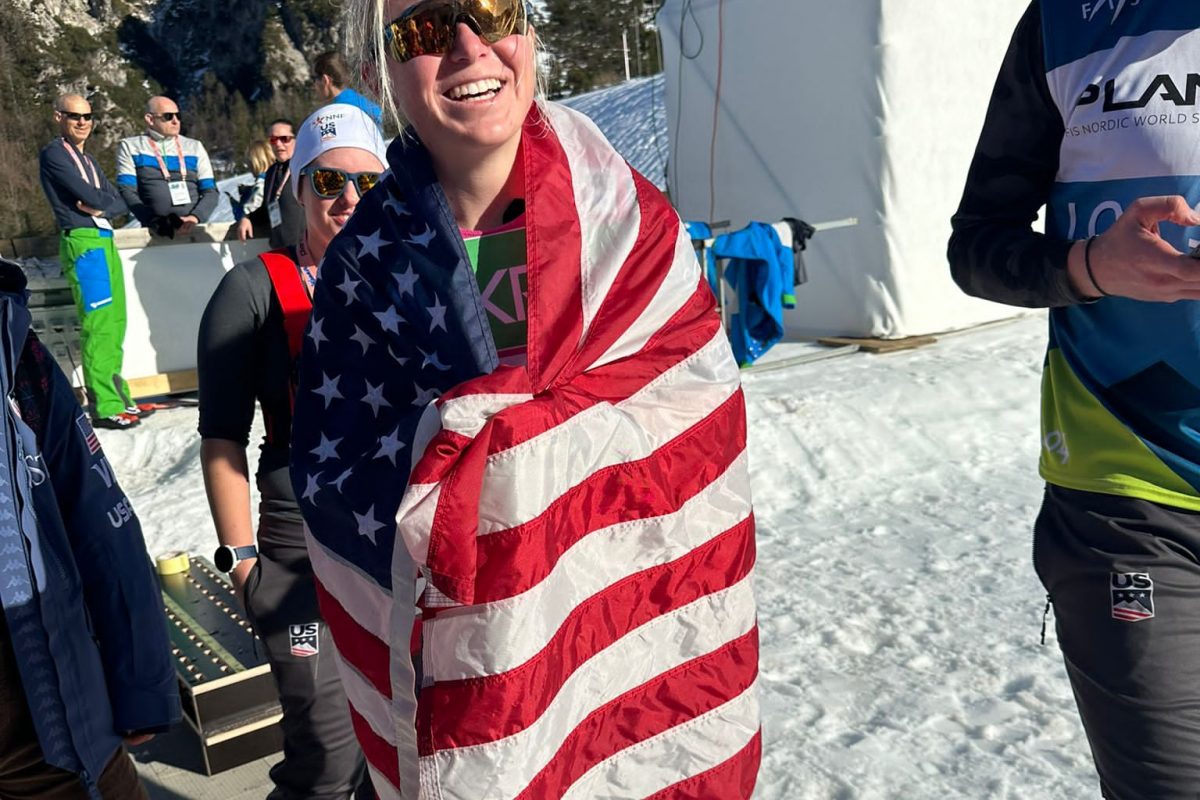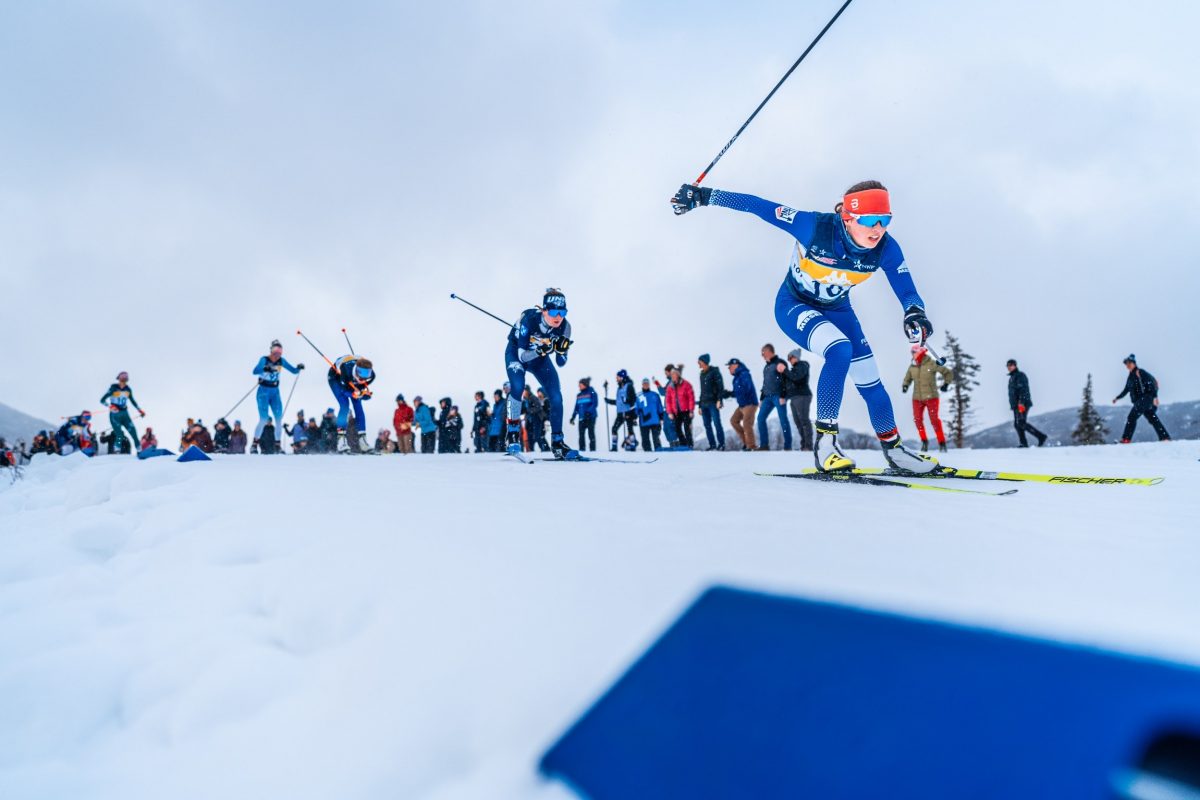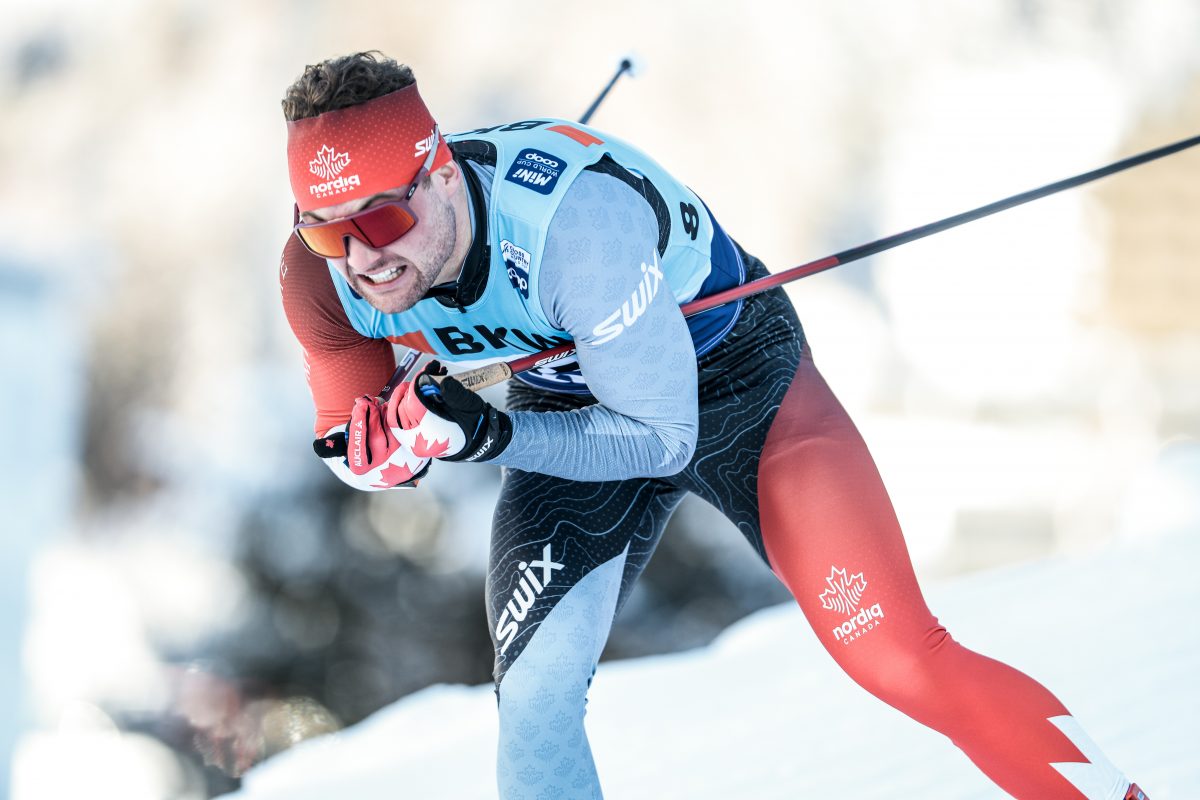
When National Development Center Thunder Bay (NDC-TB) Head Coach Eric Bailey announced in December that he was going to retire at the end of the season, the Canadian ski community wondered who, if anyone, could possibly replace him.
Over the last eight years, Bailey had quietly built a reputation as a leader at the remote training center, situated at the head of Lake Superior in Ontario. While Canmore gets most of the press these days and Quebec feeds off of every ounce of Alex Harvey’s success, the Thunder Bay squad has been steadily gaining momentum; last year Bailey placed one athlete on Cross Country Canada’s (CCC) senior development team and sent three to World Junior and U23 Championships.
“Eric has worked productively over several years to transform the Thunder Bay NDC into a credible program, as was witnessed by the performance achievements in the 2010‐11 season,” CCC High Performance Director Thomas Holland said in a press release announcing the retirement.
But while the Thunder Bay team is wondering what’s next, Bailey says that he’s not done yet, and is honing in on his final season. With two members of last year’s U23 team returning, he knows that this winter can be a successful one.
“To build on a really good year, that’s an amazing thing because the momentum is there right from day one,” he told FasterSkier in an interview. “To be able to build on that right from early May, it was phenomenal.”
Mike Somppi has graduated to senior status, but as this weekend’s U23 trials begin in at the Whistler Olympic Park, Erin Tribe will be hoping to repunch her ticket and several other Thunder Bay skiers will try for their first international teams.
Small is Beautiful
Since the advent of the National Development Center system in 1993, Thunder Bay has had it’s ups and downs. Its successes – for example by alumni Chris Jeffries, a 2006 Olympian – were tempered by growing pains.
“There was a year back in 1999 or 2000 that the Thunder Bay training center was 22 people,” Bailey said. “It went from 12 or something the year before and it grew too fast, I think. It imploded in one year. People left.”
As a Thunder Bay native, Bailey has seen the ups and downs of the program. One way that he has garnered the respect of his peers has been to learn from the center’s past mistakes. One basic lesson, he said, was to keep the team small.
“We’ve always kept the team at a size where team dynamics are really manageable,” Bailey said. “We want to grow sustainably so that we can continue to manage our resources… not go from zero to hero overnight. That’s a key for success for a training center.
“It’s really contributed to the results, because everyone gets along, everyone’s pulling on the same rope.”
Team size and coach-athlete ratios might seem like just numbers, but to Bailey, they are a central tenet of a coaching philosophy. Somppi explained that the coach treats each athlete as an individual.
“Eric’s coaching style is personal, and it is very obvious he cares immensely about the athletes,” Somppi told FasterSkier. “I’ve been fortunate to work with Eric for several years and we’ve been able to develop a strong athlete-coach relationship, with a solid understanding of what each other needs in order to be successful.”
In his tenure, Bailey kept his team at a size where each athlete could have that experience. This year, the 12 NDC-TB athletes have a four-person support staff. That’s in contrast to the two big NDC’s, the Centre National d’Entrainement Pierre Harvey in Quebec and the Alberta World Cup Academy in Canmore, which field 15 and 21 athletes, and in line with the youngest NDC, the Callaghan Valley Training Center, which has 11.
Bailey told FasterSkier that when he announced his plans to the team in Rossland, British Columbia in December, Somppi talked about how far the program had come in terms of support.
“It was only three or four short years ago that we had ten athletes and it was just me,” Bailey said. “It was a one-man show. So we’ve grown the team size only a little bit, but the support a lot.”
What Makes Thunder Bay?
While Bailey’s coaching and philosophy are undoubtedly one reason that the training center has such ardent supporters, he has built the team on foundation that predated his involvement.
One pillar of success is the center’s location. Unlike the other two NDC’s, Thunder Bay is not near a major city like Calgary or Quebec City – “for better or for worse”, Bailey said.
“The athletes that come here are super committed,” he explained.
And the city itself, home to just over 100,000 people, has strong Scandinavian roots, which make it ripe for skiing excellence.
“I’m from here, so it just seems normal to me,” Bailey said. “But to [the athletes], they’re beside themselves, a lot of these people from Ontario, or from out East, or West. They say, ‘wherever we go and ski, people want to talk to us!’ And I think that makes Thunder Bay pretty unique.
“It’s probably up there in Canada in terms of what percentage of the community has a cross-country ski past.”
Another plus is a partnership with Lakehead University. When the development centers were implemented, providing educational opportities was a goal, and it’s something that Thunder Bay has fulfilled while simultaneously reaping institutional benefits. The program’s “integrated support” is housed at the university, from physiological testing to dieticians and sports psychologists.
Athletes can take classes, too, and Bailey said that most live within walking distance of Lakehead.
“Some take as many as three or four courses, which is officially part-time, and then others are taking one or two classes,” he said. “Others, like Mike Somppi on the senior national team, aren’t taking any. But he did – that’s the thing. The year before he joined the training center he was taking mechanical engineering, five classes.”
Somppi is the team’s most senior member along with Seaton, and according to Bailey his career illustrates the benefits of Thunder Bay. Between the city’s strong support for nordic skiing, the University and its ski team, and the Big Thunder club team, it’s a good place to be a skier.
“You can start just below the training center status, trying to make it on,” said Bailey. “You can take some school, race for the varsity program there, get really high-caliber coaching through Big Thunder, let’s say – they have a full-time coach, Adam Kates – and then make the leap onto the training center team.
“It’s very smooth and seamless.”
A Really Good Year
In the end, though, Thunder Bay is just another training center. And without any context, its results aren’t as impressive; CCC’s senior development team is flooded with athletes from the other two NDC’s, while Somppi is the only Thunder Bay skier on the list. Why, then, is the coach so lauded?
Thunder Bay is small, and Bailey’s goals for each athlete are individual. With the personal attention he has designed into his program, almost all of the athletes – who ranged from first-year juniors to last-year U23s – achieved their goals last season.
“As a Training Centre coach, Eric has embraced his role to turn junior racers into experienced seniors who are capable of essentially coaching themselves,” Somppi said.
Since a quarter of the small team represented Canada in international competition, the rest of the squad was able to feel ownership over their success. That led to eight of the ten athletes returning this year, the best retention rate Thunder Bay has ever seen.
“Not only are most athletes having good results, but the ones that weren’t superstars are still all in,” Bailey said. “They want to be part of the team, they know that the dynamic, the work ethic, and the quality workouts are going to get them there eventually.”
Perhaps more than results, an athlete’s attitude and perception are what keep them skiing faster and faster. Faith and belief are themes that Bailey kept coming back to in his interview; they were the programs biggest strengths at the moment, he said.
“Faith is everything as an athlete, and as a system, and as a coach,” he said. “When you have faith in your program and you believe that it’s going to work, and you believe that it’s the team for you, it’s sort of like a self-fulfilling prophecy. When you believe it, it happens.”
And when the athletes have faith in him, Bailey returns the favor. He hoped to see more Thunder Bay athletes on the senior development team next year, and had no doubt that his skiers could qualify for World Juniors, U23’s, and the February OPA Cup trip as well.
They’re already on track: in the skate sprint at the Rossland NorAms, Somppi and Seaton both made the A-Final, which garnered the program more attention.
“This is the first time in my eight years with the centre that I have had two athletes in the A-Final together,” Bailey said in a press release at the time. “I am so proud of them.”
Nothing Left to Teach
That success by senior athletes is part of the reason Bailey felt that it would be all right to leave.
“I knew I couldn’t move on until [the program] was really stable and sustainable and in a really good position to replace me,” he explained. “And I feel that it is now – I feel that it can and will be successful in years to come.”
The senior athletes like Somppi, Tribe, and Seaton are part of the legacy Bailey will leave behind. Regardless of who the program hires to replace him, the coach was sure these older athletes, who had worked with him for several years, would pass along what they had learned; he doubted that any would switch programs after his departure.
“It’s like a business, where you have the veterans around and they’re showing the young people the ropes, and then they get to be in that middle class and they can pass on their information,” Bailey told FasterSkier. “It’s a continuum of knowledge not only about ski racing, but about how we do things here in Thunder Bay.”
Somppi agreed that Bailey had given him the skills he needed as a senior racer, and that the athletes would stick together and help one another out, come what may.
“[Bailey] has steered me in the right direction and gradually stepped back, allowing me to take on more of a role in planning my daily training,” Somppi said. “This has helped me learn what I need as an athlete.”
Bailey is ready to cut the students loose: he wasn’t sure he had much to offer skiers like Somppi anymore.
“I think it will be a healthy thing [for the seniors], because over that amount of time you impart most of the wisdom that you have, a good coach does,” the coach said. “The bigger picture of how to be a good athlete, what’s important, how to read your body, what’s your response to training – a lot of that stuff I’ve taught them.”
But besides coaching, Bailey has been slowly building organizational infrastructure which will ensure the team’s success after he is gone. The expansion of the coaching staff, the partnerships with Lakehead, the thriving board of directors for NDC-TB: these are thing things that have earned him such respect in Canada.
“Eric has put a lot of effort into developing a strong support team that will provide the program with some stability and allow a new head coach to step in much more easily,” Somppi said. “It is due to Eric’s hard work along with the NDC board members that our program has such an awesome support team. This will be Eric’s lasting legacy.”
The Unkown Knowns
Bailey’s decision mirrored one seen in the United States a year earlier, when Sun Valley Ski Education Foundation coach Travis Jones decided to hang up his coaching hat and spend less time traveling. Bailey, too, said that it was getting difficult to swing one long road trip after another.
“The travel is really intense at the high-performance level,” he lamented. “I just want a change of lifestyle, I guess. To be around. Last year I was out of town 180 days, so I want to spend more time with friends and family.”
He emphasized that his retirement had nothing to do with the Thunder Bay program itself – he was still on good terms with everyone at the NDC, and he thought that the team was in the best position it had been in years.
“In fact I’m really, really happy with where the Training Center is at,” he said. “It’s an opportunity for me to move on, try new things.”
While Bailey wasn’t sure what he’d do next – something was “brewing” but he couldn’t discuss it – he isn’t planning on leaving the ski world.
“This is a decision that I made without necessarily knowing [what I’d do next],” he laughed.
“I’m just as passionate now about this sport as I’ve ever been. I’ve seen what someone with desire and logic can do in a fairly short time, I’ve sort of proven that to myself, so I want to do that again in another way. All I know is that I want to stay in the sport, in Canada, and it’s something I feel good about doing as a career.”
In the meantime? He’s planning a trip with friends after the season is over, and will make sure he has several months of vacation, no matter what his next job might be.
“I’ve been going pretty solid without a break for about ten years, so I’m definitely going to take a couple months and relax a little bit,” he said. “Let it all sink in.”




2 comments
somebody
January 14, 2012 at 12:29 am
We all know he’s leaving the NDC to stay closer to his smokin’ hot wife. Have you SEEN her ass?
toivo
January 22, 2012 at 7:17 pm
Dude, just dude. The guy is like a moment to moment poet of the coaching profession. congrats Eric! A fine career and you’re Young enough for another life.